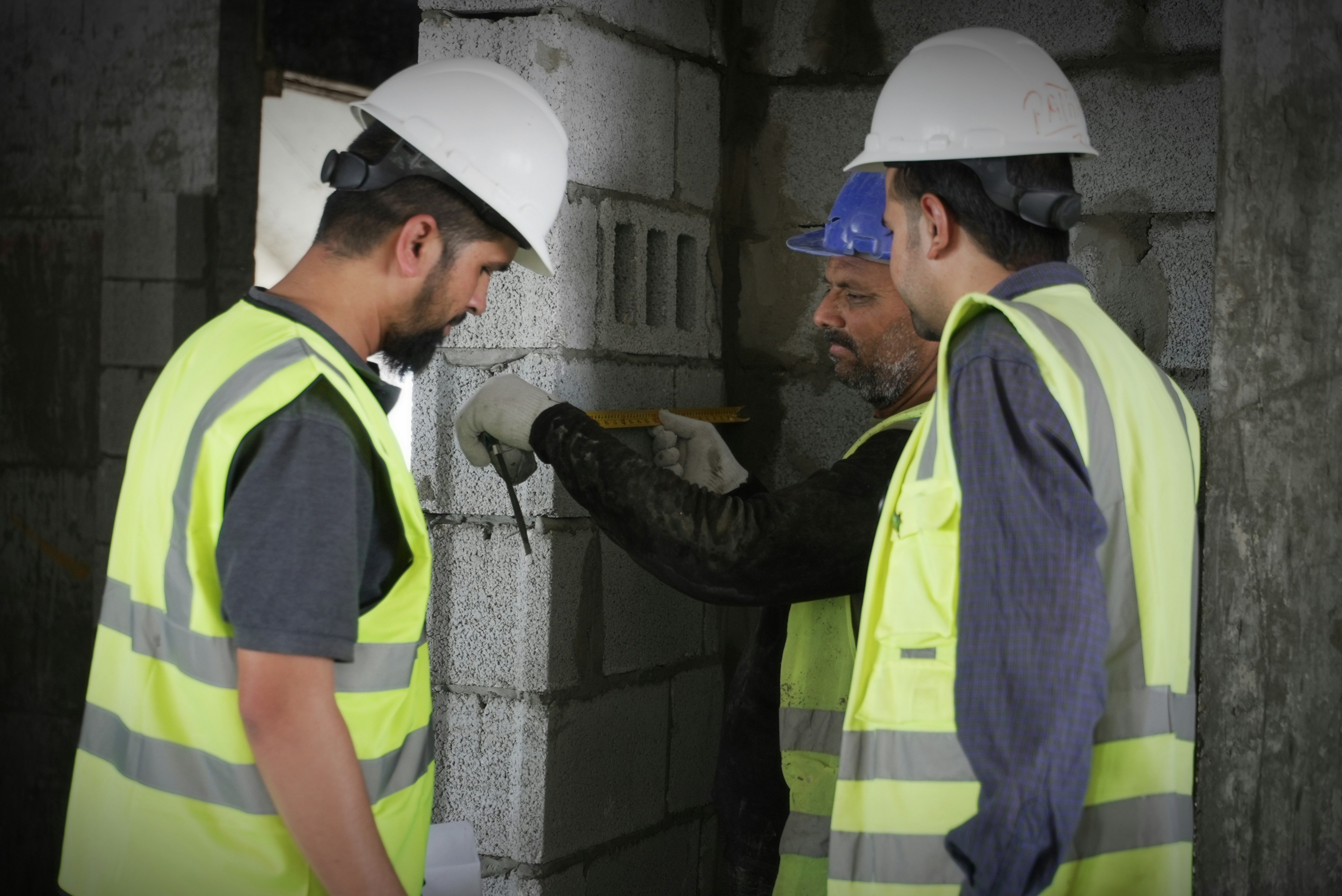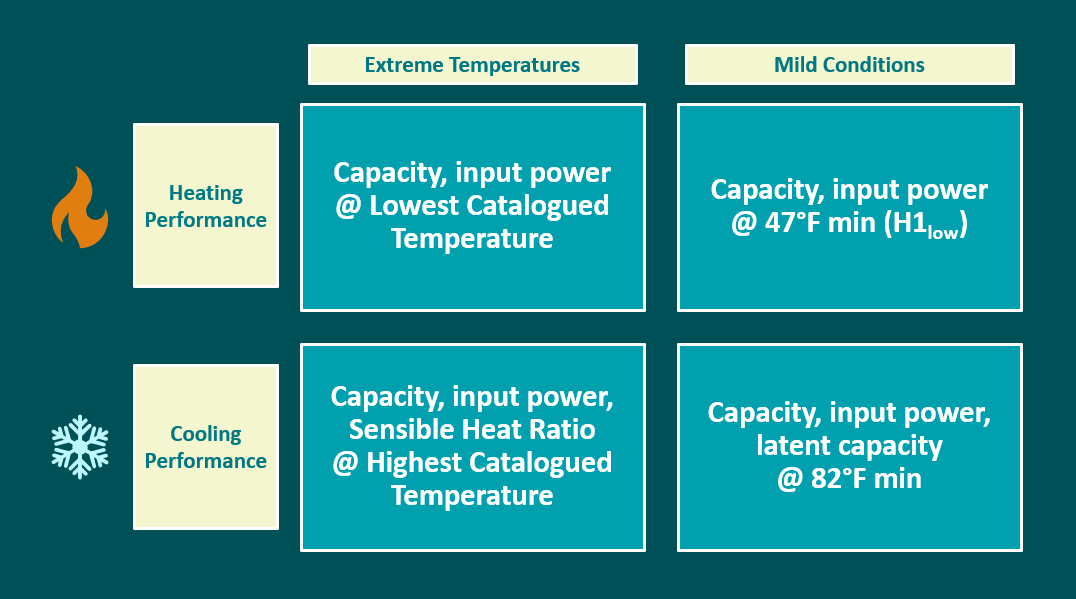

By Tara McElhinney | Tue, September 23, 25
The cold climate air source heat pump (ccASHP) market continues to grow and evolve with major advances in both technology and adoption. But challenges persist, especially when it comes to ensuring systems are designed, sized, and operated for maximum performance. Overcoming these hurdles to drive successful market transformation will require continued and strong collaboration across the industry.
NEEP is excited to share two new resources developed with input from regional experts and market actors: Training Recommendations for Designing & Sizing Air Source Heat Pumps in Cold Climates and Recommendations for Enhancing Heat Pump Performance Data. Both resources share a common message: the successful adoption of ccASHPs depends on understanding heat pump performance details, accessible information, and market alignment.
Designing & Sizing Heat Pumps in Cold Climates
Heat pumps perform most efficiently when they are properly designed and sized to fit a home’s unique heating and cooling demands. This is especially important in cold climates, where heating loads can be twice as large as cooling loads, yet the same system must be capable of handling both.
The Training Recommendations for Designing & Sizing Air Source Heat Pumps in Cold Climates resource offers a clear framework for strengthening contractor training. It identifies eight core sizing and design concepts:
- Assessing the home for weatherization and load reduction opportunities
- Performing accurate load calculations using ACCA Manual J
- Selecting the right system type for the home’s needs (e.g., ducted, ductless, or hybrid approaches)
- Sizing equipment to the heating design load in cold climates using ACCA Manual S
- Evaluating dehumidification needs and system latent capacity
- Configuring appropriate control strategies (internal temperature, supply temperature, balance points)
- Proper placement of outdoor units with sufficient clearance
- Ensuring ducted systems are designed or modified for adequate airflow and balanced distribution
Our research also found that in-person training is the most effective way to deliver large amounts of information to most contractors. On-demand training plays an important role as well, offering flexibility for busy contractors to learn new skills and information on their own schedule. While many impactful resources exist, and in various formats, contractors need a clear path to navigate. This underscores the need for consistency across training programs and recommends drawing from trusted, existing resources recommended by experts.
By focusing on these fundamentals and expanding training formats to meet specific contractor needs, the industry can build contractor confidence, improve installations, and ensure homeowners realize the full comfort, cost savings, and emissions benefits of heat pumps.
Enhancing Heat Pump Performance Data
To ensure heat pumps are properly sized and selected for efficiency and comfort, contractors should rely on accurate performance data. This new report explores high value data, where to find it, and strategies for addressing data gaps.
Recommendations for Enhancing Heat Pump Performance Data finds that most high-priority heat pump performance data are not widely available and are not reported in a consistent manner. The report also finds that higher levels of industry collaboration are necessary to promote high-quality installations. Consistent and reliable predictions of heat pump performance are key to the selection, installation, and operation of HVAC equipment.
The report explores the use-cases of performance data and how they can be improved to achieve the best results for industry members, heat pump customers, and state and utility programs to enhance the support of wide and successful uptake of this technology.
A survey of more than two hundred market actors revealed that:
- 90 percent of respondents use the NEEP ccASHP Product List while 61 percent use the AHRI directory; many also rely on manufacturer extended performance data and submittals.
- The most common use-cases for performance data selected by respondents include system sizing and selection (38 percent), rebate qualification (33 percent), and modeling (17 percent).
- The most-needed data include heating capacity at design conditioned (90 percent), high-load COP (65 percent), low-load capacity (60 percent), low-load COP (56 percent), and cooling capacity at design conditions (54 percent).
- The biggest challenges are data availability, consistency, and comparability across products and brands (29 percent), as well as the need to navigate multiple sources.
While all data can be useful, the report recommends making key additional data points available in a single, easily accessible location. The recommended data captures heating performance at low ambient and low-load conditions and cooling performance at low-load and high-ambient conditions, including total and latent capacity (see Figure 1).
The report emphasizes that consistent, comparable, and complete data are critical to supporting better equipment selection, improving customer confidence, and enabling effective program design.
Where Data and Sizing Meet
These two resources have several themes in common.
Details Matter
Switching from any fuel type to a heat pump is not a like-for-like replacement. For contractors, customers, and programs alike, understanding performance details leads to making good choices. With robust training resources and access to high-quality data, we can achieve better customer comfort, lower energy bills, and higher satisfaction while also reducing emissions and lowering peak demand impacts.
Accessible Information Empowers Stakeholders
Heat pumps are most effective when information is widely shared and easily understood. The market needs a one-stop-shop for performance data and clear guidance on what key performance data means and how to apply it to achieve positive outcomes, including in ccASHP sizing and design decisions.
Market Alignment is a Must
It is clear from both research reports that market alignment on messaging and support for contractors and other key players is essential. The industry must simplify the path to getting heat pumps right! This requires stronger collaboration across training providers, contractors and customers alike.
Looking Ahead
NEEP is working with market actors to translate these recommendations into action. This year, in collaboration with AHRI, NEEP is working to streamline the collection and reporting of expanded heat pump performance data. As we continue to drive heat pump market transformation with our stakeholders in the Northeast and beyond, stay tuned for updates and new reports and reach out to get involved!



